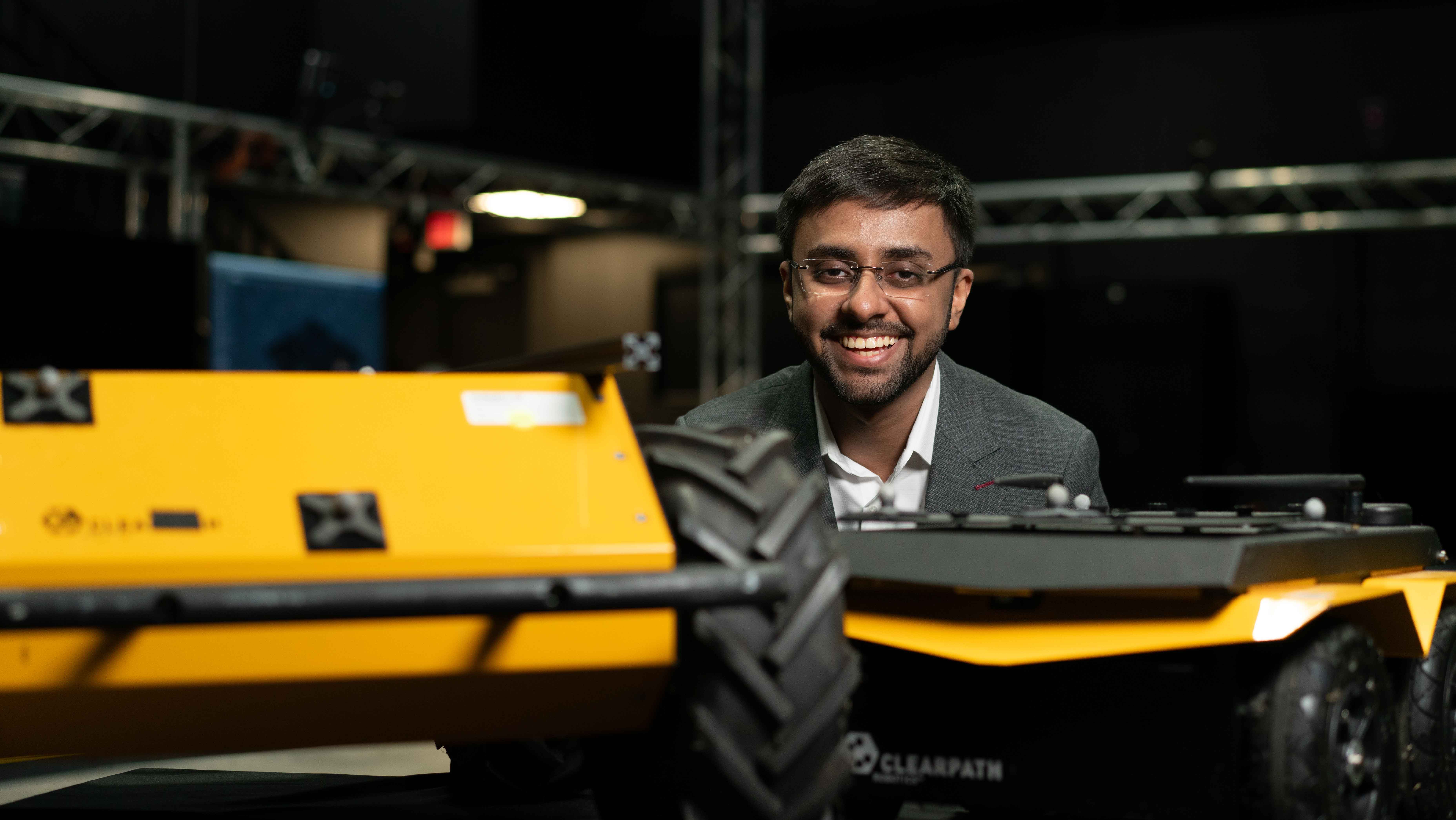
Ammar Waheed is embarking on a groundbreaking journey in autonomous systems and artificial intelligence , becoming the first U.S. Ph.D. student to receive funding from the Defence Science and Technology Laboratory (DSTL), an executive agency of the Ministry of Defence in the U.K.
He is working on this research with Dr. Zohaib Hasnain, an assistant professor of mechanical engineering, and Michael Walsh, and associate professor of practice in both mechanical engineering and the college of architecture.
This milestone not only marks a significant achievement for Ammar but also highlights the growing international collaboration in defense technology between the U.K. and the U.S.
Ammar’s path to this opportunity began in Pakistan, where he worked as a research officer in the Human-Centered Robotics Lab of the National Center of Robotics & Automation, contributing to the design and manufacturing of advanced robotic systems, including collaborative robots, exoskeletons, and active prostheses.
His expertise in motion capture systems for human biomechanical analysis led to a Ph.D. in mechanical engineering at Texas A&M University with a specialization in robotics and control systems.
Since the beginning of 2024, Ammar has sought to address one of the most pressing challenges in robotics: the simulation-to-real-world (Sim2Real) gap.
This gap refers to the discrepancies that often arise when transitioning a robotics system from a controlled, simulated environment to the unpredictable conditions of the real world.
Ammar’s research focuses on developing reliable control systems that can bridge this gap, particularly for mobile robotic platforms used in unpredictable and dynamic environments.
The DSTL’s funding has been instrumental in allowing Ammar to dedicate himself fully to his research, free from teaching responsibilities.
This support has also provided him access to Texas A&M’s state-of-the-art StarLab facility at the RELLIS Campus. Here, he conducts extensive experiments with advanced robotics systems, including the Clearpath Husky – a rugged unmanned ground vehicle built for robotics research in outdoor environments.
One of the key aspects of Ammar’s research involves developing a Sim2Real framework using simulated environments and real-world terrains. By leveraging complex dynamic models, he is developing new architectures that focus on establishing a direct, quantifiable link between the behavior of physical systems and their simulation counterparts in the environment. This framework aims to be generalizable across different robotic vehicles, enhancing the versatility and effectiveness of autonomous systems.
Additionally, Ammar is exploring the potential of Physics Informed Neural Networks to train systems that can be scaled across various types of mobile robots. This approach keeps the cost-saving benefits of simulations while making sure the systems perform accurately in real-world scenarios.
The implications of this research are vast, with potential applications not only in defense but also in civilian sectors where autonomous systems are increasingly important.
Ammar’s work is not only technically advanced but also ethically conscious. He acknowledges the critical importance of ethical considerations in AI and autonomy, especially in defense applications. By adhering to stringent ethical guidelines and actively participating in the ongoing dialogue around ethical AI, Ammar is contributing to the responsible development of technologies that have far-reaching impacts.
Collaboration has been a cornerstone of Ammar’s research journey. Regular interactions with DSTL experts, including the principal engineer from the Land Platform Systems Division, as well as his supervisor and counterparts at Texas A&M, have been crucial in refining his work. These collaborative efforts ensure that Ammar’s research is innovative and aligned with the practical needs of modern defense strategies.
Waheed continues to push the boundaries of what is possible in AI and autonomous systems. His work strengthens the ties between the U.K. and the U.S. in this field while setting the stage for new advancements that could redefine the capabilities of autonomous systems in the years to come.